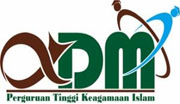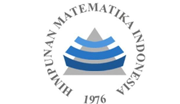Feature Selection Analysis for Diagnosing Narcissistic Personality Disorder (NPD) Using Principal Component Analysis and the Naïve Bayes Model
Abstract
Keywords
References
T. Safaria and P. D. Psi, Psikologi Abnormal: Dasar-Dasar, Teori, dan Aplikasinya. Uad Press, 2021.
P. Mitra, T. J. Torrico, and D. Fluyau, “Narcissistic Personality Disorder.,” Treasure Island (FL), 2025.
M. E. Raygoza-L., J. H. Orduño-Osuna, R. Jimenez-Sanchez, and F. N. Murrieta-Rico, “Innovative Artificial Intelligence approaches for identifying and managing DSM Cluster B personality disorders in mental health: A case study on the dark triad,” Explor. Psychol. Soc. Innov. Adv. Appl. Mach. Learn., pp. 1–20, 2025, doi: 10.4018/979-8-3693-6910-4.ch001.
D. S. Stolz, A. Vater, B. H. Schott, S. Roepke, F. M. Paulus, and S. Krach, “Reduced frontal cortical tracking of conflict between self-beneficial versus prosocial motives in Narcissistic Personality Disorder.,” NeuroImage. Clin., vol. 32, p. 102800, 2021, doi: 10.1016/j.nicl.2021.102800.
H. Taheri and A. Salimi Beni, “Artificial Intelligence, Machine Learning, and Smart Technologies for Nondestructive Evaluation BT - Handbook of Nondestructive Evaluation 4.0,” N. Meyendorf, N. Ida, R. Singh, and J. Vrana, Eds., Cham: Springer Nature Switzerland, 2025, pp. 1–29. doi: 10.1007/978-3-030-48200-8_70-1.
R. I. Kemenkes, “Kemenkes Beberkan Masalah Permasalahan Kesehatan Jiwa di Indonesia,” Diambil dari https//sehatnegeriku. kemkes. go. id/baca/rilis-media/20211007/1338675/kemenkes-beberkan-masalah-permasalahan-kesehatan-jiwa-di-indonesia, 2021.
T. Jain, A. Jain, P. Hada, H. Kumar, V. Verma, and A. Patni, Machine Learning Techniques for Prediction of Mental Health. 2021. doi: 10.1109/ICIRCA51532.2021.9545061.
M. Soori, B. Arezoo, and R. Dastres, “Digital twin for smart manufacturing, A review,” Sustain. Manuf. Serv. Econ., vol. 2, no. June, p. 100017, 2023, doi: 10.1016/j.smse.2023.100017.
J. Chung and J. Teo, “Mental Health Prediction Using Machine Learning: Taxonomy, Applications, and Challenges,” Appl. Comput. Intell. Soft Comput., vol. 2022, no. 1, p. 9970363, Jan. 2022, doi: https://doi.org/10.1155/2022/9970363.
A. Taha, B. Cosgrave, and S. McKeever, “Using Feature Selection with Machine Learning for Generation of Insurance Insights,” Appl. Sci., vol. 12, no. 6, 2022, doi: 10.3390/app12063209.
S. J. Yim et al., “The utility of smartphone-based, ecological momentary assessment for depressive symptoms,” J. Affect. Disord., vol. 274, pp. 602–609, 2020, doi: https://doi.org/10.1016/j.jad.2020.05.116.
A. Qtaish, M. Braik, D. Albashish, M. T. Alshammari, A. Alreshidi, and E. J. Alreshidi, “Enhanced coati optimization algorithm using elite opposition-based learning and adaptive search mechanism for feature selection,” Int. J. Mach. Learn. Cybern., vol. 16, no. 1, pp. 361–394, 2025, doi: 10.1007/s13042-024-02222-3.
R. Adhao and V. Pachghare, “Feature selection using principal component analysis and genetic algorithm,” J. Discret. Math. Sci. Cryptogr., vol. 23, no. 2, pp. 595–602, Feb. 2020, doi: 10.1080/09720529.2020.1729507.
L. Amatullah, Y. Widiastiwi, and N. Chamidah, “Penerapan Klasifikasi Random Forest Terhadap Data Gangguan Spektrum Autisme (ASD) Pada Anak-Anak Menggunakan Seleksi Fitur Principal Component Analysis,” Semin. Nas. Mhs. Ilmu Komput. dan Apl., pp. 356–364, 2022.
A. Javeed, P. Anderberg, A. N. Ghazi, A. Javeed, A. L. Dallora, and J. S. Berglund, “Optimizing Depression Prediction in Older Adults: A Comparative Study of Feature Extraction and Machine Learning Models,” 2024 Int. Conf. Control. Autom. Diagnosis, ICCAD 2024, 2024, doi: 10.1109/ICCAD60883.2024.10553890.
K. S. Arlandy et al., “Mengoptimalkan Kinerja Naïve Bayes Pada Ancaman Modern Dengan Menggunakan PCA Pada Data Intrusion Detection System (IDS),” vol. 8, no. 1, 2025.
J. S. Aguilar-Ruiz, C. Romero, and A. Cicconardi, “XNB: Explainable Class-Specific NaIve-Bayes Classifier,” 2024, [Online]. Available: http://arxiv.org/abs/2411.01203
İ. Ö. Bucak, M. Veziroğlu, and E. Veziroğlu, “Performance Comparison between Naive Bayes and Machine Learning Algorithms for News Classification,” İ. Ö. Bucak, Ed., Rijeka: IntechOpen, 2024. doi: 10.5772/intechopen.1002778.
D. M. Hilty, Y. Cheng, and D. D. Luxton, “Artificial Intelligence and Predictive Modeling in Mental Health BT - Digital Mental Health: The Future is Now,” D. Mucić and D. M. Hilty, Eds., Cham: Springer Nature Switzerland, 2024, pp. 323–350. doi: 10.1007/978-3-031-59936-1_13.
E. Odhiambo Omuya, G. Onyango Okeyo, and M. Waema Kimwele, “Feature Selection for Classification using Principal Component Analysis and Information Gain,” Expert Syst. Appl., vol. 174, p. 114765, 2021, doi: https://doi.org/10.1016/j.eswa.2021.114765.
G. H. Martono and N. Sulistianingsih, “Optimizing Autisme Spectrum Disorder Identification with Dimentionality Reduction Technique and K-Medoid,” 5th Int. Conf. Comput. Sci. Inf. Manag., pp. 837–854, 2024.
D. S. W. Nguyen and M. M. Shaik, “Impact of Artificial Intelligence on Corporate Leadership,” J. Comput. Commun., vol. 12, no. 04, pp. 40–48, 2024, doi: 10.4236/jcc.2024.124004.
P. Elisa and A. R. Isnain, “COMPARISON OF RANDOM FOREST, SUPPORT VECTOR MACHINE AND NAIVE BAYES ALGORITHMS TO ANALYZE SENTIMENT TOWARDS MENTAL HEALTH STIGMA,” J. Tek. Inform., vol. 5, no. 1 SE-Articles, pp. 321–329, Feb. 2024, doi: 10.52436/1.jutif.2024.5.1.1817.
P. Apricia et al., “Kinerja Naïve Bayes Classifier Pada Penyaringan Short Message Service (SMS) Spam,” J. Siger Mat., vol. 04, no. 02, pp. 59–66, 2023.
M. Heydarian, T. E. Doyle, and R. Samavi, “MLCM: Multi-Label Confusion Matrix,” IEEE Access, vol. 10, pp. 19083–19095, 2022, doi: 10.1109/ACCESS.2022.3151048.
R. Chen, “Narcissistic personality disorder: A general review,” SHS Web Conf., vol. 193, p. 03012, 2024, doi: 10.1051/shsconf/202419303012.
C. Naulak and P. R. Jindal, “A comparative study of Naive Bayes Classifiers with improved technique on Text Classification,” TechRxiv, pp. 0–8, 2022, doi: 10.36227/techrxiv.19918360.v1.
H. Sulistiani, A. Syarif, K. Muludi, and Warsito, “Performance evaluation of feature selections on some ML approaches for diagnosing the narcissistic personality disorder,” Bull. Electr. Eng. Informatics, vol. 13, no. 2, pp. 1383–1391, 2024, doi: 10.11591/eei.v13i2.6717.
DOI: http://dx.doi.org/10.30829/zero.v9i1.24086
Refbacks
- There are currently no refbacks.

This work is licensed under a Creative Commons Attribution-ShareAlike 4.0 International License.
Publisher : Department of Mathematics Faculty of Science and Technology Universitas Islam Negeri Sumatera Utara Medan | |
✉️ Email: zero_journal@uinsu.ac.id 📱 WhatsApp:085270009767 (Admin Official) | |
 |  |  |  |  |



